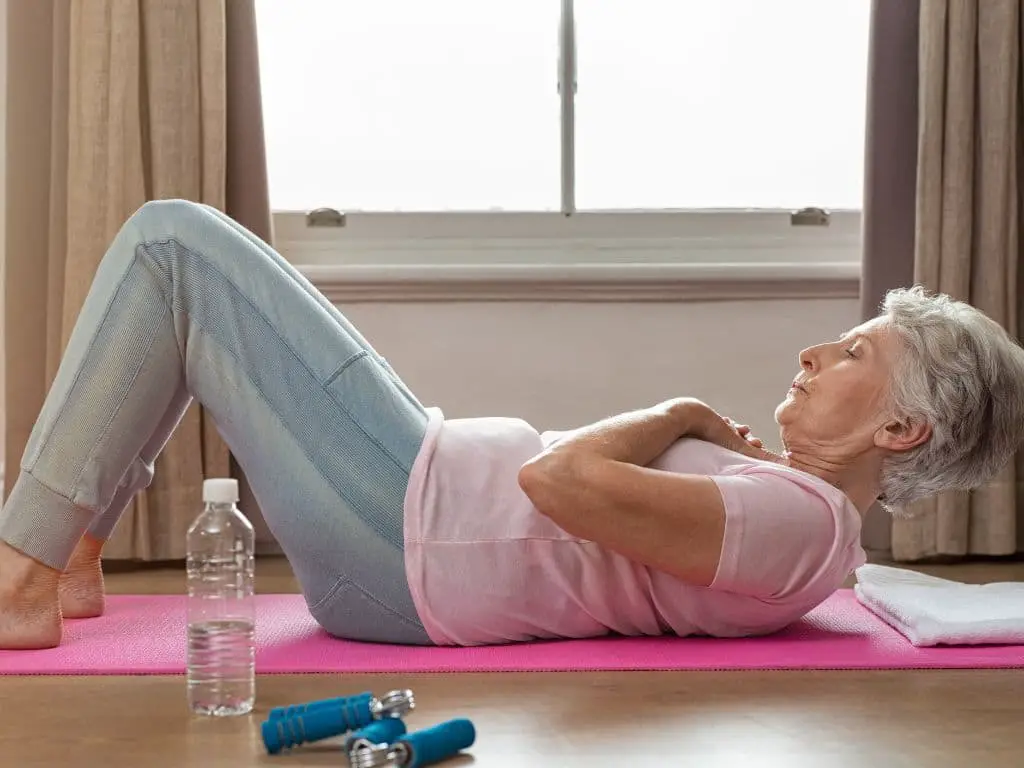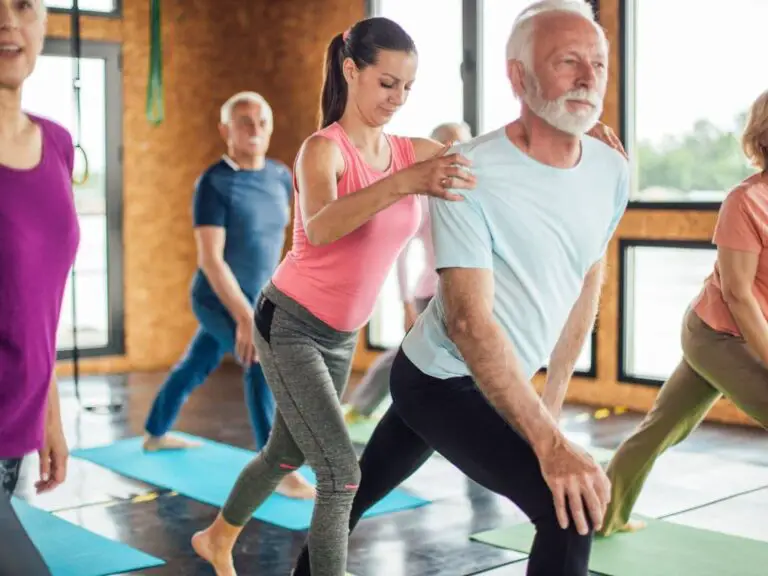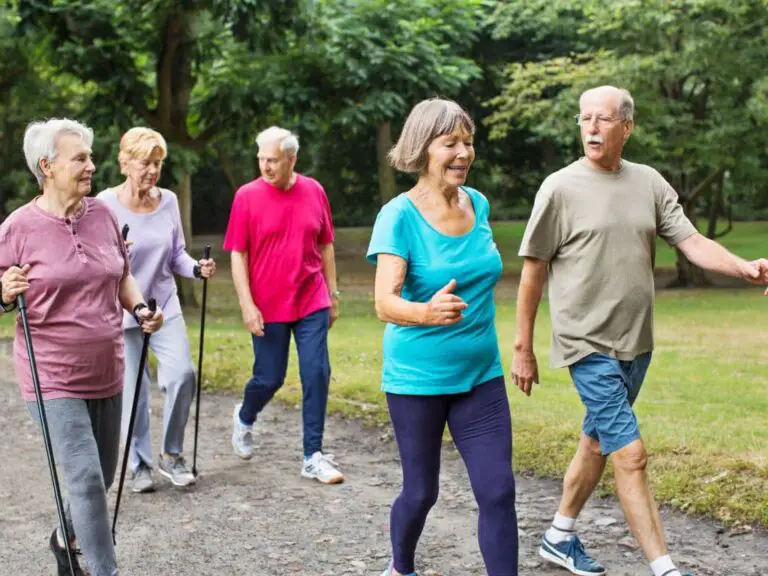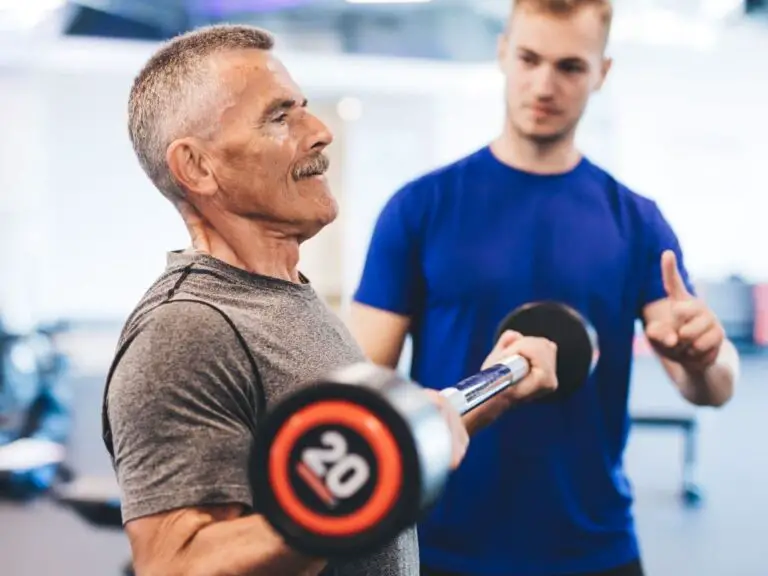Are Sit Ups Good for Seniors?
Sit-ups are a classic core strengthening exercise that involve lifting the upper body from a supine position by contracting the abdominal muscles. They have long been a staple exercise recommended for seniors to maintain core strength and balance. However, as we age there are some important considerations regarding the safety and effectiveness of sit-ups.
Are Sit Ups good for Seniors? Sit-ups, a classic core-strengthening exercise, can yield benefits for seniors such as the improvement of overall fitness, the reduction of back pain, and strengthening of core muscles, which enhances balance and posture. However, this exercise can also pose risks for seniors, such as spinal compression, neck strain, exacerbation of back pain, and increased vulnerability to injuries, especially for those with conditions like spinal stenosis, osteoporosis, and arthritis.
What are the potential risks of doing sit-ups for seniors? Sit-ups put force on the spine as the back is continually flexed and extended. For seniors, this repetitive flexion can exacerbate conditions like spinal stenosis, disc degeneration, and vertebral fractures. The neck is also at risk of injury if straining to lift the head against gravity. While sit-ups engage the abs, they can neglect coordination with deeper core muscles leading to imbalances.

As such, safer alternatives such as planks, pelvic tilts, yoga poses, Pilates, wall sits, and chair exercises are often advised for seniors to help strengthen their core while minimizing the risk of injury.
Benefits of Sit-Ups for Seniors
When done properly, sit-ups can provide some benefits for seniors:
- Strengthening the core muscles: Sit-ups engage the rectus abdominis and obliques to build abdominal strength. This contributes to better balance and posture.
- Improving overall fitness: Adding sit-ups builds strength and cardiovascular endurance which supports daily function. They are a simple exercise requiring no equipment.
- Reducing back pain: Strong core muscles can reduce load on the spine and minimize pain.
However, these benefits depend on using proper form and modifying sit-ups to avoid injury.
Risks of Sit-Ups for Seniors
There are some distinct risks associated with traditional sit-ups for seniors:
- Spinal compression: Repeatedly flexing the spine can compress vertebral discs and facet joints increasing pain. Conditions like spinal stenosis are aggravated.
- Neck strain: Lifting the head against gravity strains neck muscles and compresses cervical vertebrae. This can cause injury and headaches.
- Exacerbating back pain: Sit-ups can make back pain worse by overly engaging hip flexors and straining the lower back.
- Risk of injury: Lack of mobility through the spine makes sit-ups risky for seniors. Conditions like osteoporosis and arthritis increase vulnerability to fractures and joint damage.
Safe Alternatives to Sit-Ups for Seniors
The good news is there are several safe and effective alternatives to traditional sit-ups for seniors:
- Planks: Holding the plank pose engages deep core stabilizers without spinal flexion. Can be done from knees to modify.
- Pelvic tilts: Tilting the pelvis posteriorly and anteriorly works the lower abs without strain.
- Yoga poses: Poses like boat pose and dolphin plank safely strengthen the core.
- Pilates: Pilates emphasizes core control, posture, and coordination. The Hundred and swimming exercises are safe options.
- Wall sits: Sliding down and up a wall activates the core and legs without joint loading.
- Chair exercises: Seated knee lifts and rotations work the abs from a stable chair. Allows modification.
| Exercise | Description | Muscles Targeted |
|---|---|---|
| Plank | Hold a pushup position, maintaining neutral spine | Rectus abdominis, obliques, transverse abdominis, back extensors |
| Pelvic tilts | Rock pelvis forward and back while contracting abs | Rectus abdominis, glutes |
| Dolphin plank | Hold forearms and toes on floor, body in plank | Obliques, serratus anterior, lats, shoulders |
| Wall sits | Slide down and up a wall bending knees | Quads, hamstrings, glutes, calves |
| Seated knee lifts | Raise one knee up to chest, lower back down | Rectus abdominis, hip flexors |
Conclusion
While sit-ups have been a longstanding exercise for seniors, they do pose risks of injury to the neck and spine. It is best for seniors to avoid traditional, full sit-ups and opt for core exercises that maintain a neutral spine like planks or Pilates. With appropriate modifications and alternatives, seniors can safely strengthen their core to improve balance, posture and daily function. The key is focusing on proper alignment, control, and coordination over quantity of reps. With a little creativity there are many options to keep the core strong and reduce injury risk as we age.
Frequently Asked Questions
-
Should old people do situps?
Sit-ups or crunches used to be the best moves for keeping your core strong in the past. These exercises may not be as efficient as they once were. These exercises strengthen very few muscles and pose risks to older people. Boehm states that they are dangerous as you pull on your neck.
-
How can I flatten my stomach at 65?
The Physical Activity Guidelines for Americans recommends that you aim for 150-300 minutes of moderate intensity exercise per week, and 75-150 minutes of high-intensity activity. Cardio can be achieved by walking, running, dancing, and even tennis.
-
How long should a 65 year old hold a plank?
Experts suggest that anywhere between 10 and 30 seconds should be sufficient. L’Italien suggests that you focus on performing multiple sets in shorter time frames. You can increase the length of your plank as you go along, up to one minute or two, but not beyond this.
-
Does core strength affect bowel movements?
Exercises that strengthen the core muscles increase the abdominal pressure,23-24 which can increase colorectal movement due to GI tract stimulation.
-
What is the single best core exercise?
Core exercises that are most beneficial include the dead bug, side plant, front plank, vertical leg crunches and flutter kicks.
-
Why should seniors avoid deadlifts?
To avoid injury, deadlifting requires good form and posture. Many seniors suffer from poor posture and back problems that may make lifting weights difficult. Bad form when deadlifting can cause serious injury to your spine, shoulders and arms.
-
How many miles a day should a 66 year old woman walk?
According to research published in The American Journal of Medicine, women who regularly walk more than 1 mile per day are healthier than those who do not.
-
Does sucking in your stomach help?
“In reality though, many people don’t have well-sculpted stomachs. Experts and Kearney-Cooke stressed that holding on to your gut for too long is not healthy. It’s painful, Kearney-Cooke said. This is not good for the whole body.
-
Can you still build muscle after 65?
Seniors can still bulk up on muscle by pressing iron. As we age, our muscle mass drops at astonishing rates. Researchers found that lifting weights can help people over 50 not only preserve but even increase muscle mass.
-
Can you strengthen a weak abdominal wall?
Your abdominal wall will be strengthened by any high-impact exercise, including vertical jumps and lateral bounds as well as sprinting, jumprope exercises, and jump-rope. Your abdominal muscles will also be engaged by any exercise that requires you to swing, throw, push, pull, or pull from a standing place.
Conclusion
There are a lot of different opinions on whether or not situps are good for seniors. However, the bottom line is that it’s important to do your research and talk to your doctor before starting any new exercise regimen.
That being said, there are plenty of other abdominal exercises that are safe and beneficial for seniors. Check out our website for some tested and verified links to get started.






